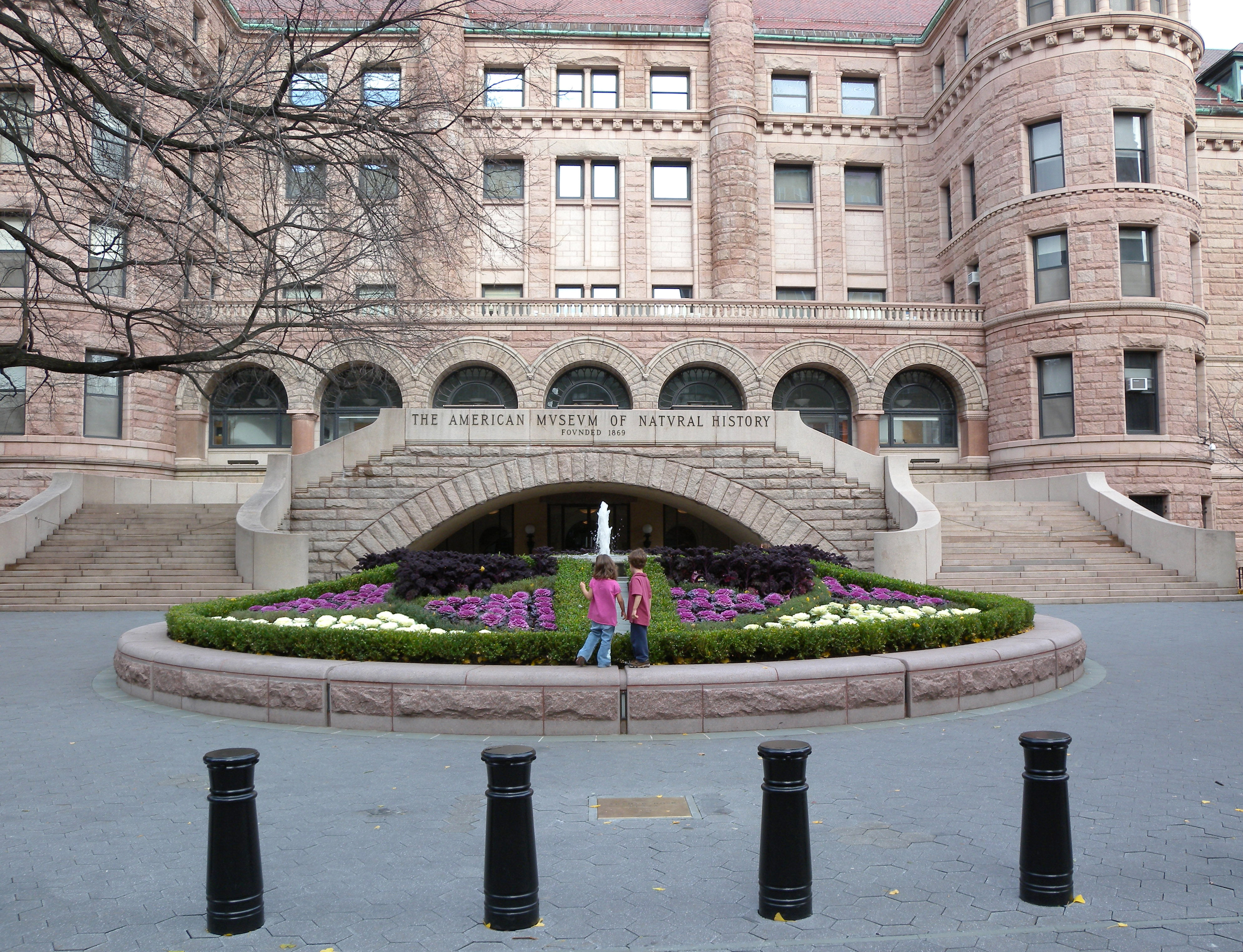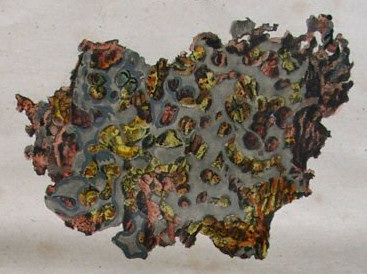|
Esquel (meteorite)
__NOTOC__ Esquel is a meteorite found near Esquel, a Patagonian town in the northwest part of the provinces of Argentina, province of Chubut Province, Chubut in Argentina. It is a pallasite, a type of stony–iron meteorite that when cut and polished shows yellowish olivine (peridot) crystals. In 1951 a farmer uncovered a meteorite in an unknown location near Esquel while digging a hole for a water tank. The meteorite was purchased from the finders and taken to the United States in 1992 by meteorite expert Robert A. Haag, Robert Haag. The Esquel pallasite is known worldwide among collectors and the meteoritical scientific community. Esquel is regarded as one of the most beautiful meteorites ever found and is also one of the most desirable pallasites among meteorite collectors. It is a main group pallasite (MGP). Specimens The Meteoritical Bulletin no. 29 (1964) reports a main mass of "about 1500 kg". However O. A. Turone claimed a main mass weight of ."The weight of the main m ... [...More Info...] [...Related Items...] OR: [Wikipedia] [Google] [Baidu] |
Stony–iron Meteorite
Stony-iron meteorites or siderolites are meteorites that consist of nearly equal parts of meteoric iron and Silicate mineral, silicates. This distinguishes them from the stony meteorites, that are mostly silicates, and the iron meteorites, that are mostly meteoric iron. Stony-iron meteorites are all differentiated, meaning that they show signs of alteration. They are therefore achondrites. The stony-irons are divided into mesosiderites and pallasites. Pallasites have a matrix of meteoric iron with embedded silicates (most of it olivine). Mesosiderites are breccias which show signs of metamorphism. The meteoric iron occurs in clasts instead of a matrix.Karl K. Turekian. ''Meteorites, comets, and planets'112/ref> They are in the top rank of all Meteorite classification schemes, usually called "Type". Mineralogy The meteoric iron of stony-irons is similar to that of iron meteorites, consisting mostly of kamacite and taenite in different proportions. The silicates are dominated by o ... [...More Info...] [...Related Items...] OR: [Wikipedia] [Google] [Baidu] |
Crystals
A crystal or crystalline solid is a solid material whose constituents (such as atoms, molecules, or ions) are arranged in a highly ordered microscopic structure, forming a crystal lattice that extends in all directions. In addition, macroscopic single crystals are usually identifiable by their geometrical shape, consisting of flat faces with specific, characteristic orientations. The scientific study of crystals and crystal formation is known as crystallography. The process of crystal formation via mechanisms of crystal growth is called crystallization or solidification. The word ''crystal'' derives from the Ancient Greek word (), meaning both "ice" and " rock crystal", from (), "icy cold, frost". Examples of large crystals include snowflakes, diamonds, and table salt. Most inorganic solids are not crystals but polycrystals, i.e. many microscopic crystals fused together into a single solid. Polycrystals include most metals, rocks, ceramics, and ice. A third category of ... [...More Info...] [...Related Items...] OR: [Wikipedia] [Google] [Baidu] |
Glossary Of Meteoritics
This is a glossary of terms used in meteoritics, the science of meteorites. # * 2 Pallas – an asteroid from the asteroid belt and one of the likely parent bodies of the CR meteorites. * 4 Vesta – second-largest asteroid in the asteroid belt and likely source of the HED meteorites. * 221 Eos – an asteroid from the asteroid belt and one of the likely parent bodies of the CO meteorites. * 289 Nenetta – an asteroid from the asteroid belt and one of the likely parent bodies of the angrites. * 3103 Eger – an asteroid from the asteroid belt and one of the likely parent bodies of the aubrites. * 3819 Robinson – an asteroid from the asteroid belt and one of the likely parent bodies of the angrites. * IAB meteorite, IA meteorite – an iron meteorite group now part of the IAB group/complex. * IAB meteorite – an iron meteorite and primitive achondrite of the IAB group/complex. * IAB meteorite, IB meteorite – an iron meteorite group now part of the IAB group/complex. * IC me ... [...More Info...] [...Related Items...] OR: [Wikipedia] [Google] [Baidu] |
American Museum Of Natural History
The American Museum of Natural History (AMNH) is a natural history museum on the Upper West Side of Manhattan in New York City. Located in Theodore Roosevelt Park, across the street from Central Park, the museum complex comprises 21 interconnected buildings housing 45 permanent exhibition halls, in addition to a planetarium and a library. The museum collections contain about 32 million specimens of plants, animals, fungi, fossils, minerals, rocks, meteorites, human remains, and human cultural artifacts, as well as specialized collections for frozen tissue and genomic and astrophysical data, of which only a small fraction can be displayed at any given time. The museum occupies more than . AMNH has a full-time scientific staff of 225, sponsors over 120 special field expeditions each year, and averages about five million visits annually. The AMNH is a private 501(c)(3) organization. The naturalist Albert S. Bickmore devised the idea for the American Museum of Natural History in 1 ... [...More Info...] [...Related Items...] OR: [Wikipedia] [Google] [Baidu] |
Canadian Museum Of Nature
The Canadian Museum of Nature (; CMN) is a national museums of Canada, national natural history museum based in Canada's National Capital Region (Canada), National Capital Region. The museum's exhibitions and public programs are housed in the Victoria Memorial Museum Building, a in Ottawa, Ontario. The museum's administrative offices and scientific centres are housed at a separate location, the Natural Heritage Campus, in Gatineau, Quebec. The museum originated from a museum established by the Geological Survey of Canada in 1856. Initially based in Montreal, the museum relocated to downtown Ottawa in 1881. In 1911, the museum relocated to the Victoria Memorial Museum Building. Initially, a natural history museum, the institution later expanded to include an anthropology and human history department; with the institution renamed the National Museum of Canada in 1927. The departments of the national museum were later split into separate national institutions, with the natural hist ... [...More Info...] [...Related Items...] OR: [Wikipedia] [Google] [Baidu] |
At New York City 2024 058
AT or at may refer to: Geography Austria * Austria (ISO 2-letter country code) * .at, Internet country code top-level domain United States * Atchison County, Kansas (county code) * The Appalachian Trail (A.T.), a 2,180+ mile long mountainous trail in the Eastern United States Elsewhere * Antigua and Barbuda, World Meteorological Organization country code * Ashmore and Cartier Islands (FIPS 10-4 territory code, and obsolete NATO country code) * At, Bihar, village in Aurangabad district of Bihar, India * Province of Asti, Italy (ISO 3166-2:IT code) * Australia, LOC MARC code Politics * Awami Tahreek a left-wing Pakistani political party Science and technology Computing * @ (or "at sign"), the punctuation symbol now typically used in e-mail addresses and tweets) * at (command), used to schedule tasks or other commands to be performed or run at a certain time * IBM Personal Computer/AT ** AT (form factor) for motherboards and computer cases ** AT connector, a five-pi ... [...More Info...] [...Related Items...] OR: [Wikipedia] [Google] [Baidu] |
Robert A
The name Robert is an ancient Germanic given name, from Proto-Germanic "fame" and "bright" (''Hrōþiberhtaz''). Compare Old Dutch ''Robrecht'' and Old High German ''Hrodebert'' (a compound of ''Hrōþ, Hruod'' () "fame, glory, honour, praise, renown, godlike" and ''berht'' "bright, light, shining"). It is the second most frequently used given name of ancient Germanic origin.Reaney & Wilson, 1997. ''Dictionary of English Surnames''. Oxford University Press. It is also in use Robert (surname), as a surname. Another commonly used form of the name is Rupert (name), Rupert. After becoming widely used in Continental Europe, the name entered England in its Old French form ''Robert'', where an Old English cognate form (''Hrēodbēorht'', ''Hrodberht'', ''Hrēodbēorð'', ''Hrœdbœrð'', ''Hrœdberð'', ''Hrōðberχtŕ'') had existed before the Norman Conquest. The feminine version is Roberta (given name), Roberta. The Italian, Portuguese, and Spanish form is Roberto (given name), ... [...More Info...] [...Related Items...] OR: [Wikipedia] [Google] [Baidu] |
United States
The United States of America (USA), also known as the United States (U.S.) or America, is a country primarily located in North America. It is a federal republic of 50 U.S. state, states and a federal capital district, Washington, D.C. The 48 contiguous states border Canada to the north and Mexico to the south, with the semi-exclave of Alaska in the northwest and the archipelago of Hawaii in the Pacific Ocean. The United States asserts sovereignty over five Territories of the United States, major island territories and United States Minor Outlying Islands, various uninhabited islands in Oceania and the Caribbean. It is a megadiverse country, with the world's List of countries and dependencies by area, third-largest land area and List of countries and dependencies by population, third-largest population, exceeding 340 million. Its three Metropolitan statistical areas by population, largest metropolitan areas are New York metropolitan area, New York, Greater Los Angeles, Los Angel ... [...More Info...] [...Related Items...] OR: [Wikipedia] [Google] [Baidu] |
Olivine
The mineral olivine () is a magnesium iron Silicate minerals, silicate with the chemical formula . It is a type of Nesosilicates, nesosilicate or orthosilicate. The primary component of the Earth's upper mantle (Earth), upper mantle, it is a common mineral in Earth's subsurface, but weathers quickly on the surface. Olivine has many uses, such as the gemstone peridot (or chrysolite), as well as industrial applications like metalworking processes. The ratio of magnesium to iron varies between the two endmember (mineralogy), endmembers of the solid solution series: forsterite (Mg-endmember: ) and fayalite (Fe-endmember: ). Compositions of olivine are commonly expressed as Mole (unit), molar percentages of forsterite (Fo) and/or fayalite (Fa) (''e.g.'', Fo70Fa30, or just Fo70 with Fa30 implied). Forsterite's melting temperature is unusually high at atmospheric pressure, almost , while fayalite's is much lower – about . Melting temperature varies smoothly between the two end ... [...More Info...] [...Related Items...] OR: [Wikipedia] [Google] [Baidu] |
Pallasite
The pallasites are a Meteorite classification#Terminology, class of stony–iron meteorite. They are relatively rare, and can be distinguished by the presence of large olivine crystal inclusions in the ferro-nickel matrix. These crystals represent mantle and core material from planetary differentiation, differentiated planetesimals, which were destroyed by violent collisions during the early formation of the Solar System. Structure and composition It consists of centimetre-sized olivine crystals of peridot quality in an iron-nickel Matrix (geology), matrix. Coarser metal areas develop Widmanstätten patterns upon etching. Minor constituents are schreibersite, troilite, chromite, pyroxenes, and phosphates (whitlockite, stanfieldite, farringtonite, and merrillite). Classification and subgroups Using the oxygen isotopic composition, meteoric iron composition and silicate composition pallasites are divided into 4 subgroups:O. Richard Norton. ''The Cambridge encyclopedia of meteori ... [...More Info...] [...Related Items...] OR: [Wikipedia] [Google] [Baidu] |
Stony–iron Meteorite
Stony-iron meteorites or siderolites are meteorites that consist of nearly equal parts of meteoric iron and Silicate mineral, silicates. This distinguishes them from the stony meteorites, that are mostly silicates, and the iron meteorites, that are mostly meteoric iron. Stony-iron meteorites are all differentiated, meaning that they show signs of alteration. They are therefore achondrites. The stony-irons are divided into mesosiderites and pallasites. Pallasites have a matrix of meteoric iron with embedded silicates (most of it olivine). Mesosiderites are breccias which show signs of metamorphism. The meteoric iron occurs in clasts instead of a matrix.Karl K. Turekian. ''Meteorites, comets, and planets'112/ref> They are in the top rank of all Meteorite classification schemes, usually called "Type". Mineralogy The meteoric iron of stony-irons is similar to that of iron meteorites, consisting mostly of kamacite and taenite in different proportions. The silicates are dominated by o ... [...More Info...] [...Related Items...] OR: [Wikipedia] [Google] [Baidu] |






